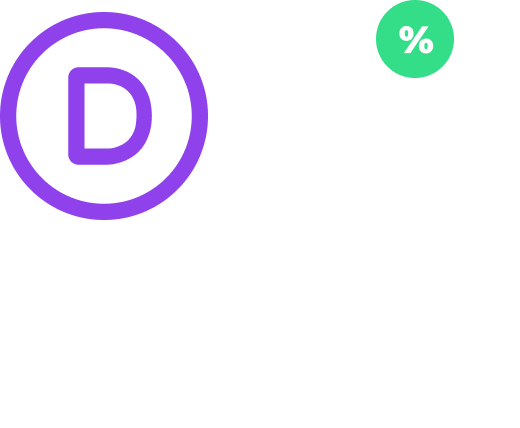It’s a scary world out there for any web developer looking to make a name for himself. Competitors are happy to undercut you every step of the way and good clients (the kind who understand the difficulties of your job and are willing to pay a premium) are very hard to come by.
Aside from busting your fingers off doing quality work, there’s no magic formula to guarantee your success. But at the very least we can help you by pointing out a few of the most glaring mistakes that a budding developer can make, and teaching you how to navigate around them to keep your customers happy.
Are you ready to take a good hard look at your own practices when dealing with customers? Let’s get down to business!
1. You Charge Too Little

Image by Tgraphic / shutterstock.com
Often, new developers face a catch-22 when it comes to pricing their labor. You want to find good clients (who will hopefully understand the value of your work), but if you don’t have years of experience to back you up, all of your best prospects will flock to other developers. This leads you to take on low-paying jobs just to build up your portfolio, but what your clients end up requesting isn’t a good showcase for your abilities and thus, you can’t find better-paid work.
However, if you’re already somewhat established in the field but still have problems finding well-paid jobs, there may a be a few other factors at play in your case. One of the most common errors in this situation is to offer prospective clients low prices in order to entice them into hiring you, which sounds kind of reasonable, right?
Wrong. Studies have shown that consumers tend to correlate price with quality. This might translate to that prospective client choosing to go with another developer who made himself seem more attractive or in-demand simply by giving a higher quote. Of course, in a real-life scenario, other factors will apply, such as the quality of your portfolios (which we will discuss later on) and whether you’ve had positive interactions with the client, but the psychology of pricing shouldn’t be ignored.
But Tom, how do I know if my prices are too low?
Now this is a trickier subject. You can always check online sources to see salary averages for WordPress developers according to several levels of experience (or seniority), but as we all know, wages vary heavily between countries. This is the main reason why developers from developing countries often flock to online freelance platforms, where they can far exceed the earning potential of their local markets even while getting paid only a fraction of what they should by global standards.
If you’re a freelancer, these averages serve as a good reference point. However, you also need to figure out exactly how many contracts or jobs you would have to take on in order to reach your desired income (or your break-even point, for starters) and start working your way towards that figure without biting off more than you can chew.
Holding out for the right jobs is not a luxury that everyone can afford, I know, but in the long run, it’s a decision that will vastly increase your personal satisfaction.
2. You Overpromise but Under Deliver

Image by Antoniu / shutterstock.com
When you first meet someone, it’s perfectly normal to try to put your best foot forward. However, there’s a time and a place for embellishment, and it’s not while discussing client proposals.
You’d be surprised at how often developers offer unrealistic delivery times without having a full idea of what a given project will entail, then subsequently fail to meet their promises. If you’re a freelancer there’s really no excuse for this, since you should be more than familiar with your own working pace.
Missing a deadline is one of the most surefire ways to scare customers away. Unless that’s your aim, you need to put some serious thought into how long each project is going to take, then add in a little buffer time just to err on the side of caution.
This point doesn’t apply simply to deadlines, however. You should adopt a cautious attitude when gauging the level of work behind every proposed feature, and never make a promise if you’re not a 100% sure you can keep it.
It’s far better to come off as overly cautious than to go back on your word when dealing with a client.
3. Your Projects Aren’t Easy to Maintain

Image by Mix3r / shutterstock.com
Ask a group of developers what their worst job-related horror stories are and chances are that you’ll get more than a few anecdotes about having to clean up (and in some cases code from scratch) whatever mess the previous guy left.
WordPress is a very user-friendly CMS, but we tend to build a lot upon the system by adding plugins, themes, and customizations, which the clients must then contend with and learn how to navigate.
Easy-to-maintain projects translate into happy customers who will run into fewer problems (there’ll always be a hiccup or two) down the road during their interactions with your product. Happy customers are more likely to come back to you for their future projects or recommend you to their friends.
Although we focus a lot on the online aspect of our field, a lot of your work is likely to come from referrals, so make an effort to give past clients the same VIP treatment that prospectives ones get.
4. You Have an Outdated Portfolio

Image by silvae / shutterstock.com
This is a big one. As a creative professional, a good portfolio can mean the difference between a tide of prospective customers or just the occasional raindrop.
Your portfolio is likely to be the first thing that a client will take a look at in order to figure out whether you may be a good fit for his project or not. If someone wants to get a website built, they’ll probably have an idea in mind of what it would look like, which will likely be influenced by some of the latest trends in web development.
As such, your portfolio should not only feature your best work, but also those projects which are the most up to date and showcase new technologies and trends. If yours is filled with old school projects and a mishmash of random pieces, you may as well code a tumbleweed drifting across it. For an example of a gorgeous portfolio with interactive elements, check out Pierre.io.
If you want to take your portfolio a level further you can also write a bit about each project in terms that laymen will understand. You could, for example, point out the features you’re proud of, and talk about what you learned during the development process. This kind of attention to detail could mean the difference between an “I’ll be in touch” and a “You’re hired!”.
5. You’re Not Easy to Contact

Image by Wissanu / shutterstock.com
This a no-brainer, but you’d be surprised at how many business opportunities are lost due to forgetting to answer an email within a reasonable timeframe.
You have to make a hard decision as to which communication methods you’ll implement for your business (whether it’s just you or an entire team, it’s still a business). If you decide to stick with just emails, you may lose potential customers who prefer the personal touch of a phone call or chat via Skype.
On the other hand if you make yourself available on all possible channels to keep customers happy, you may find yourself in the unenviable position of spending more time working as your own secretary than actually coding.
A healthy compromise between these two options is the best choice, as well as letting your customers know between which hours you’ll actually available to respond to them. Even if you’re awake working around the clock, boundaries need to be set.
6. You Don’t Have Clear Payment Terms

Image by Biro Emoke / shutterstock.com
Just to be clear, this isn’t about whether you should offer web development packages or not, although that’s a question we’ve covered in the past from a design standpoint.
This question has to do with your payment terms themselves. Do you have a standard contract which protects both you and your clients? Do you require a down payment before you start working? Do you only give an actual quote after thoroughly assessing a client’s needs? Does your contract include provisions for additional work?
In case you’re wondering, the answer to all of the above should be “Yes!”, and you should be upfront about these terms with all of your potential clients. Freelancers, in particular, seem to overlook contracts with alarming frequency when not working through an intermediary platform. If that’s the case for you, check out our Comprehensive Guide to Creating an Ironclad WordPress Development Contract.
Finally, in addition to all of the above, you should also make a list of all the payment methods you’ll accept for your services and make this information readily available alongside the rest of your terms. The same rule applies here as with contact methods; you need to find a healthy compromise between those that are most convenient to you and those which would be preferable to your clients.
Conclusion
The above advice may seem like a lot to keep in mind when dealing with customers, and to be truthful, it can be daunting even for a veteran. However, as a developer, you’re uniquely well equipped to analyze problems and figure out how to make things work in a consistent manner. These are simply a few extra hurdles on your way to success.
Remember this simple list of do’s and don’ts and you’ll be well on your way to becoming a top-notch WordPress developer:
- Don’t undersell yourself.
- Don’t overpromise.
- Do keep your projects as simple as possible.
- Do keep your portfolio up to date.
- Do strive to make yourself available to customers.
- Do keep your payment terms clear.
Do you have any tips you’d like to share with other budding WordPress developers? Let us know in the comments.
Article thumbnail image by blocberry / shutterstock.com









I’ve also found that Skyping while completely nude and drunk tends to rub clients the wrong way as well.
I’ll probably stop doing it in 2016.
“probably” 😀
Yeah, Apple’s FACETIME is far better than Skype for that.
You made my day.
Very good article. I would provide one insight about #4 Outdated Portfolio. Piere’s site looks great. Clearly responsive, modern, bootstraped even thought I don’t see Divi being used ( just kidding).
Here is a subtle perspective on my part. The fact that the project websites don’t link to the actual site itself could raise doubt in my opinion by some visitors since its easy to screenshots. 1. Folks are not likely going to search for those actual websites to see his work in action, and 2. It provides more credibility to not just show a “screenshot” but having the courage to direct the visitor in a new window to the actual website of your former clients. The should be your best references anyway and your link should be in their footers.
Something to keep in mind when sharing a portfolio. I have to say Peter’s site is a VERY nice way to do it with some additional improvements even more effective…
These are great tips! I love that you put pricing for number 1! It is very tricky and you put it in the right place. All of these are important for anybody really who has a website. I’ve told clients before, through my Discovery Calls, they need to be sure to make it easy for people to contact them. At the end of the day, if nothing else, at least make the contact feature easy and accessible.
The portfolio part is huge for those selling a creative work, especially if you are designing websites. Part of my job is to evaluate websites and if you are trying to say your a web designer and your site is dated, I’m out. Yes, paying work takes priority and keeps you busy, but you have to have a decent site. Always surprise and delight vs over promise and under deliver. It will make everyone happier!
Really great information for developers which are very important and you must keep in mind.
Thanks,
Website design companies and developers should reflect on this post and improve their brand and how customers see their business.